Balkinization
an unanticipated consequence of
Jack M. Balkin
Balkinization Symposiums: A Continuing List
E-mail:
Jack Balkin:
jackbalkin at yahoo.com
Bruce Ackerman
bruce.ackerman at yale.edu
Ian Ayres
ian.ayres at yale.edu
Corey Brettschneider
corey_brettschneider at brown.edu
Mary Dudziak
mary.l.dudziak at emory.edu
Joey Fishkin
joey.fishkin at gmail.com
Heather Gerken heather.gerken at yale.edu
Abbe Gluck abbe.gluck at yale.edu
Mark Graber
mgraber at law.umaryland.edu
Stephen Griffin
sgriffin at tulane.edu
Jonathan Hafetz
jonathan.hafetz at shu.edu
Jeremy Kessler
jkessler at law.columbia.edu
Andrew Koppelman
akoppelman at law.northwestern.edu
Marty Lederman
msl46 at law.georgetown.edu
Sanford Levinson
slevinson at law.utexas.edu
David Luban
david.luban at gmail.com
Gerard Magliocca
gmaglioc at iupui.edu
Jason Mazzone
mazzonej at illinois.edu
Linda McClain
lmcclain at bu.edu
John Mikhail
mikhail at law.georgetown.edu
Frank Pasquale
pasquale.frank at gmail.com
Nate Persily
npersily at gmail.com
Michael Stokes Paulsen
michaelstokespaulsen at gmail.com
Deborah Pearlstein
dpearlst at yu.edu
Rick Pildes
rick.pildes at nyu.edu
David Pozen
dpozen at law.columbia.edu
Richard Primus
raprimus at umich.edu
K. Sabeel Rahmansabeel.rahman at brooklaw.edu
Alice Ristroph
alice.ristroph at shu.edu
Neil Siegel
siegel at law.duke.edu
David Super
david.super at law.georgetown.edu
Brian Tamanaha
btamanaha at wulaw.wustl.edu
Nelson Tebbe
nelson.tebbe at brooklaw.edu
Mark Tushnet
mtushnet at law.harvard.edu
Adam Winkler
winkler at ucla.edu
Compendium of posts on Hobby Lobby and related cases
The Anti-Torture Memos: Balkinization Posts on Torture, Interrogation, Detention, War Powers, and OLC
The Anti-Torture Memos (arranged by topic)
Recent Posts
A Thought about the Unitary Executive and the 22nd Amendment
Just A Few Blogs
ACS Blog
Alas, a Blog
Althouse
Arts and Letters Daily
Atrios (Eschaton)
Bill of Health
Buzzflash.com
Buzz Machine
Cato at Liberty
Juan Cole (Informed Comment)
Concurring Opinions
The Constitution in 2020
Corrente
Crooked Timber
Daily Howler
Daily Kos
Dana Boyd
Brad DeLong
Digby (Hullabaloo)
Discriminations
Daniel Drezner
Kevin Drum (Mother Jones)
Electrolite
En Banc
Eunomia (Daniel Larison)
Fafblog
Michael Froomkin (Discourse.net)
GovLab (Beth Noveck)
Rick Hasen (Election Law)
History News Network
How Appealing
Ignatz (Sam Heldman)
The Importance of (Ernie Miller)
Infolaw
Instapundit
International Economic Law and Policy Blog
IntLawGrrls
Jacob Levy
Jesus' General
Jurisdynamics
The Kitchen Cabinet
Mark Kleiman
Law Blog Central
Larry Lessig
Lawyers, Guns and Money
Liberal Oasis
Brian Leiter's Law School Reports
The Leiter Reports
Marginal Revolution
Megan McArdle
Memeorandum
Metafilter
Mirror of Justice
The New Republic
Newseum
No More Mister Nice Blog
Brendan Nyhan
Opinio Juris
Orcinus
The Originalism Blog
Pandagon
Passport (Foreign Policy)
Overcoming Bias
Political Animal (Washington Monthly)
Political Theory Daily Review
Political Wire (Taegan Goddard)
The Poor Man
Virginia Postrel
Prawfsblawg
Public Reason
Jonathan Rauch
Raw Story
Redstate
ReligiousLeftLaw.com
Reporters Committee For Freedom of the Press
Reproductive Rights Blog
Rothman's Roadmap to the Right of Publicity
SCOTUS Blog
Seeing the Forest
Clay Shirky
The Shifted Librarian
The Situationist
Larry Solum (Legal Theory)
Andrew Sullivan
Talking Points Memo
Talk Left
Tapped
Tbogg
TechPresident
The Paper Chase (Jurist)
Tom Paine
Tom Tomorrow (This Modern World)
Eve Tushnet
Uggabugga
University of Chicago Law School Faculty Blog
Unqualified Offerings
The Volokh Conspiracy
War and Piece (Laura Rozen)
Wampum
Oliver Willis
Wonkette
Written Description
Matthew Yglesias
Yin
Your Choice of Feeds
1. XML
powered by
2. Atom Feed
3. RSS 2.0
Thursday, February 27, 2025
A Thought about the Unitary Executive and the 22nd Amendment
Richard Primus
A fair amount of the
argument in favor of the unitary executive model of presidential power is
rooted in an account of the Founding. I
am skeptical of important parts of that account. But the point I want to raise here is about
the impact, on theories of presidential power, of a later event in the making
of constitutional law. That later event
is the adoption of the Twenty-Second Amendment, under which a twice-elected
president cannot run for re-election. The
point I want to raise is about what an enactment like the Twenty-Second
Amendment can tell us, not about any original vision of the presidency, but
about the vision of the presidency that prevailed in 1951, when the Amendment
was adopted. The further question I want
to raise goes like this: if the Constitution’s provisions about the presidency
were partly written in the middle of the twentieth century, what role should
the prevailing understanding of the presidency as it existed at that time play
in an overall theory of presidential power?
The chief bearing of this question, for present purposes, is that it
might induce skepticism about an important aspect of unitary executive theory:
that is, the proposition that the president must be able to remove executive
officers at will, and that Congress lacks the power to insulate
executive-branch officials—or maybe even executive-branch personnel
generally—from the presidential ax. Unitary executive theory is heavily structural. To be sure, it comes with a (contestable) reading
of the text of Article II and various claims about the way the Founding
generation understood executive power.
But in the form that has been most potent within the judiciary, unitary
executive theory depends for its force on an idea about democratic
accountability: that the personnel of the executive branch must be accountable
to the president, who in turn is accountable to the electorate. For the president to be held responsible for
the actions of executive officials, the thinking goes, he must be able to fire
executive-branch personnel who fail to carry out their duties in the way he
thinks proper. The public’s assurance
that the president will for the most part exercise his authority over the
executive branch prudently, and in the public interest, lies in the public’s
ability to hold the president accountable at the polls. To be sure, a modicum of reality-checking would reveal
that democratic elections are blunt mechanisms for holding executive-branch
personnel to account. Presidential
elections turn on multiple factors, some of which would be beyond the control
of presidents even if presidents were able to direct all executive-branch
action with impeccable precision. Given
the size of the electorate, the infrequency of elections, and the dizzying
array of reasons why people vote the way they do, the chances that any
particular decision a president makes about firing or retaining a subordinate
will play a significant role in a re-election campaign are rather small. Still, the basic idea that elections are a
mechanism of accountability has something to it. And one of the chief reasons that presidents
(and many other officials) are thought trustworthy to exercise the powers of
office is that they can be turned out of office if they use those powers
poorly. The Twenty-Second Amendment puts a major dent in that
idea. It means that the President of the
United States will frequently be electorally unaccountable. If you cannot run for re-election, the voters
cannot police your behavior by threatening to refuse to return you to
office. To be sure, presidents
ineligible to run for re-election might have other incentives to stay popular
with the electorate: popularity might help them get cooperation from Congress,
and an unpopular president might damage his party’s electoral fortunes even
after he is out of the game, and so on.
But it would be hard to say that the elimination of the straightforward
electoral check makes no significant difference in the degree to which a
president is democratically accountable.
And once we recognize that the Twenty-Second Amendment makes presidents
less democratically accountable than they previously were, we should ask what
assumptions about the presidency might have helped the Americans who supported
that Amendment reach the view, all things considered, that it was safe to vest
the considerable powers of the presidency in someone who be electorally
unaccountable much of the time. I make no strong claim about the answer. But it is worth noting that the presidency the
drafters and ratifiers of the Twenty-Second Amendment knew was not the
presidency of unitary executive theory. He
was enormously powerful: the Leader of the Free World, with access to a (small
but terrifying) stock of nuclear weaponry.
But he did not have unlimited freedom to direct the bureaucracy, or
choose the personnel, of the modern administrative state. A dozen years before Congress proposed the
Twenty-Second Amendment, the Supreme Court decided Humphrey’s Executor v. United States, holding that Congress had the
authority to constrain the president’s latitude to dismiss administrative
commissioners and, more broadly, federal officials whose duties could be
described as other than “purely executive.”
One year before proposing the Twenty-Second Amendment, Congress passed
the Administrative Procedure Act, whose rules channel and constrain the
exercises of bureaucratic power, including a great deal of power exercised by
people appointed by or answerable to the president. In short, the presidency that the framers and
ratifiers of the Twenty-Second Amendment contemplated—and whose electoral
accountability they were willing to compromise—was a president whose freedom of
action was importantly constrainable by Congress, including through the
mechanism of insulating federal officers from at-will removal. I’m not claiming that the Twenty-Second Amendment
would not have been adopted if the constitutional law of the mid-twentieth
century had conformed to the unitary-executive model that later gained so many
adherents. How post-war Americans might
or might not have thought differently about the presidency if this or that
feature of the office had been different then is a question on which proof is
essentially impossible. In the age of
totalitarian dictators, maybe the fear of a president-for-life would have been
strong enough to inspire a constitutional term limit, and the concomitant loss
of electoral accountability during a second term, even if the president had had
the power that unitary executive theory would give him. Or maybe, in that same age of totalitarian
dictators, the successful movement for a constitutional amendment limiting
presidential terms would also have been a successful movement for a
constitutional amendment disestablishing a unitary-executive model of the
presidency, had that model been operative at the time. It’s impossible to know. But two propositions seem clear. First, a theory of presidential power that
rests in any significant part on ideas about what the Constitution-makers
presumed about the office needs to take account of the presumptions that
operated for the Constitution-makers of 1947-51 and not just those of 1787-88. Second, the presidency of 1947-51 was not the
presidency of unitary-executive theory.
Indeed, the Constitution-makers of 1947-51 restructured the office in a
way that has meant that a great deal of the time, the president is not an
officer for whom the mechanism of democratic accountability functions in the
way that the theory standardly presumes.
(Or more precisely, the president is an officer for whom that mechanism,
which never functions more than bluntly in the real world, does not even function
as a matter of ideal theory.) Perhaps
that matters.
Posted
5:24 PM
by Richard Primus [link]
Books by Balkinization Bloggers

Linda C. McClain and Aziza Ahmed, The Routledge Companion to Gender and COVID-19 (Routledge, 2024)

David Pozen, The Constitution of the War on Drugs (Oxford University Press, 2024)

Jack M. Balkin, Memory and Authority: The Uses of History in Constitutional Interpretation (Yale University Press, 2024)
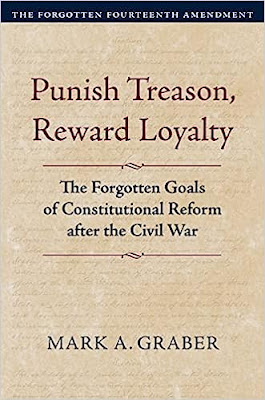
Mark A. Graber, Punish Treason, Reward Loyalty: The Forgotten Goals of Constitutional Reform after the Civil War (University of Kansas Press, 2023)
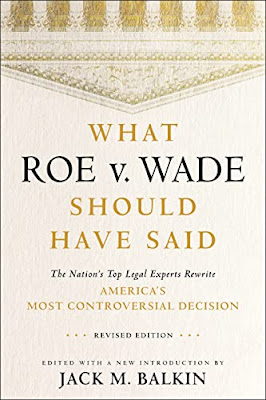
Jack M. Balkin, What Roe v. Wade Should Have Said: The Nation's Top Legal Experts Rewrite America's Most Controversial Decision - Revised Edition (NYU Press, 2023)

Andrew Koppelman, Burning Down the House: How Libertarian Philosophy Was Corrupted by Delusion and Greed (St. Martin’s Press, 2022)

Gerard N. Magliocca, Washington's Heir: The Life of Justice Bushrod Washington (Oxford University Press, 2022)
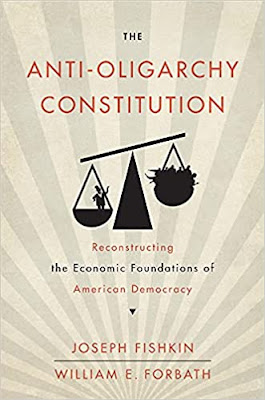
Joseph Fishkin and William E. Forbath, The Anti-Oligarchy Constitution: Reconstructing the Economic Foundations of American Democracy (Harvard University Press, 2022)
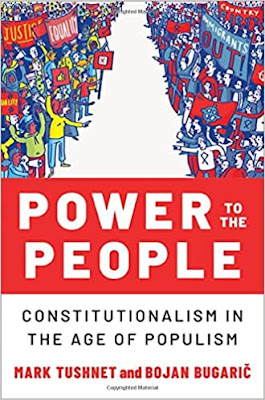
Mark Tushnet and Bojan Bugaric, Power to the People: Constitutionalism in the Age of Populism (Oxford University Press 2021).

Mark Philip Bradley and Mary L. Dudziak, eds., Making the Forever War: Marilyn B. Young on the Culture and Politics of American Militarism Culture and Politics in the Cold War and Beyond (University of Massachusetts Press, 2021).

Jack M. Balkin, What Obergefell v. Hodges Should Have Said: The Nation's Top Legal Experts Rewrite America's Same-Sex Marriage Decision (Yale University Press, 2020)

Frank Pasquale, New Laws of Robotics: Defending Human Expertise in the Age of AI (Belknap Press, 2020)

Jack M. Balkin, The Cycles of Constitutional Time (Oxford University Press, 2020)

Mark Tushnet, Taking Back the Constitution: Activist Judges and the Next Age of American Law (Yale University Press 2020).

Andrew Koppelman, Gay Rights vs. Religious Liberty?: The Unnecessary Conflict (Oxford University Press, 2020)

Ezekiel J Emanuel and Abbe R. Gluck, The Trillion Dollar Revolution: How the Affordable Care Act Transformed Politics, Law, and Health Care in America (PublicAffairs, 2020)

Linda C. McClain, Who's the Bigot?: Learning from Conflicts over Marriage and Civil Rights Law (Oxford University Press, 2020)
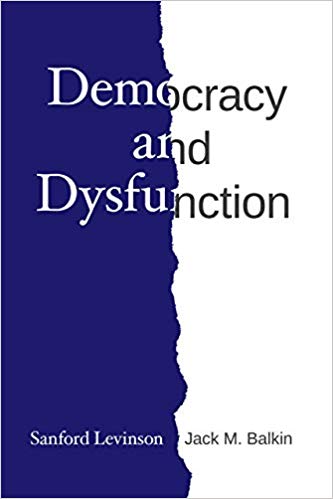
Sanford Levinson and Jack M. Balkin, Democracy and Dysfunction (University of Chicago Press, 2019)

Sanford Levinson, Written in Stone: Public Monuments in Changing Societies (Duke University Press 2018)

Mark A. Graber, Sanford Levinson, and Mark Tushnet, eds., Constitutional Democracy in Crisis? (Oxford University Press 2018)

Gerard Magliocca, The Heart of the Constitution: How the Bill of Rights became the Bill of Rights (Oxford University Press, 2018)

Cynthia Levinson and Sanford Levinson, Fault Lines in the Constitution: The Framers, Their Fights, and the Flaws that Affect Us Today (Peachtree Publishers, 2017)

Brian Z. Tamanaha, A Realistic Theory of Law (Cambridge University Press 2017)

Sanford Levinson, Nullification and Secession in Modern Constitutional Thought (University Press of Kansas 2016)

Sanford Levinson, An Argument Open to All: Reading The Federalist in the 21st Century (Yale University Press 2015)

Stephen M. Griffin, Broken Trust: Dysfunctional Government and Constitutional Reform (University Press of Kansas, 2015)

Frank Pasquale, The Black Box Society: The Secret Algorithms That Control Money and Information (Harvard University Press, 2015)

Bruce Ackerman, We the People, Volume 3: The Civil Rights Revolution (Harvard University Press, 2014)
Balkinization Symposium on We the People, Volume 3: The Civil Rights Revolution

Joseph Fishkin, Bottlenecks: A New Theory of Equal Opportunity (Oxford University Press, 2014)

Mark A. Graber, A New Introduction to American Constitutionalism (Oxford University Press, 2013)

John Mikhail, Elements of Moral Cognition: Rawls' Linguistic Analogy and the Cognitive Science of Moral and Legal Judgment (Cambridge University Press, 2013)

Gerard N. Magliocca, American Founding Son: John Bingham and the Invention of the Fourteenth Amendment (New York University Press, 2013)

Stephen M. Griffin, Long Wars and the Constitution (Harvard University Press, 2013)

Andrew Koppelman, The Tough Luck Constitution and the Assault on Health Care Reform (Oxford University Press, 2013)

James E. Fleming and Linda C. McClain, Ordered Liberty: Rights, Responsibilities, and Virtues (Harvard University Press, 2013)
Balkinization Symposium on Ordered Liberty: Rights, Responsibilities, and Virtues

Andrew Koppelman, Defending American Religious Neutrality (Harvard University Press, 2013)

Brian Z. Tamanaha, Failing Law Schools (University of Chicago Press, 2012)

Sanford Levinson, Framed: America's 51 Constitutions and the Crisis of Governance (Oxford University Press, 2012)

Linda C. McClain and Joanna L. Grossman, Gender Equality: Dimensions of Women's Equal Citizenship (Cambridge University Press, 2012)

Mary Dudziak, War Time: An Idea, Its History, Its Consequences (Oxford University Press, 2012)

Jack M. Balkin, Living Originalism (Harvard University Press, 2011)

Jason Mazzone, Copyfraud and Other Abuses of Intellectual Property Law (Stanford University Press, 2011)

Richard W. Garnett and Andrew Koppelman, First Amendment Stories, (Foundation Press 2011)

Jack M. Balkin, Constitutional Redemption: Political Faith in an Unjust World (Harvard University Press, 2011)

Gerard Magliocca, The Tragedy of William Jennings Bryan: Constitutional Law and the Politics of Backlash (Yale University Press, 2011)

Bernard Harcourt, The Illusion of Free Markets: Punishment and the Myth of Natural Order (Harvard University Press, 2010)

Bruce Ackerman, The Decline and Fall of the American Republic (Harvard University Press, 2010)
Balkinization Symposium on The Decline and Fall of the American Republic

Ian Ayres. Carrots and Sticks: Unlock the Power of Incentives to Get Things Done (Bantam Books, 2010)

Mark Tushnet, Why the Constitution Matters (Yale University Press 2010)
Ian Ayres and Barry Nalebuff: Lifecycle Investing: A New, Safe, and Audacious Way to Improve the Performance of Your Retirement Portfolio (Basic Books, 2010)
.jpg)
Jack M. Balkin, The Laws of Change: I Ching and the Philosophy of Life (2d Edition, Sybil Creek Press 2009)

Brian Z. Tamanaha, Beyond the Formalist-Realist Divide: The Role of Politics in Judging (Princeton University Press 2009)
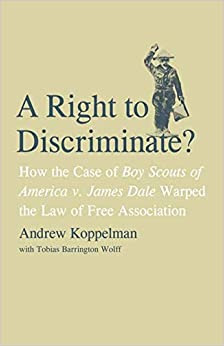
Andrew Koppelman and Tobias Barrington Wolff, A Right to Discriminate?: How the Case of Boy Scouts of America v. James Dale Warped the Law of Free Association (Yale University Press 2009)

Jack M. Balkin and Reva B. Siegel, The Constitution in 2020 (Oxford University Press 2009)
Heather K. Gerken, The Democracy Index: Why Our Election System Is Failing and How to Fix It (Princeton University Press 2009)

Mary Dudziak, Exporting American Dreams: Thurgood Marshall's African Journey (Oxford University Press 2008)

David Luban, Legal Ethics and Human Dignity (Cambridge Univ. Press 2007)

Ian Ayres, Super Crunchers: Why Thinking-By-Numbers is the New Way to be Smart (Bantam 2007)

Jack M. Balkin, James Grimmelmann, Eddan Katz, Nimrod Kozlovski, Shlomit Wagman and Tal Zarsky, eds., Cybercrime: Digital Cops in a Networked Environment (N.Y.U. Press 2007)
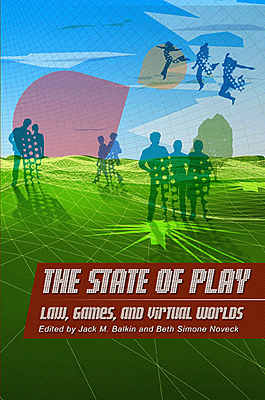
Jack M. Balkin and Beth Simone Noveck, The State of Play: Law, Games, and Virtual Worlds (N.Y.U. Press 2006)

Andrew Koppelman, Same Sex, Different States: When Same-Sex Marriages Cross State Lines (Yale University Press 2006)
Brian Tamanaha, Law as a Means to an End (Cambridge University Press 2006)
Sanford Levinson, Our Undemocratic Constitution (Oxford University Press 2006)
Mark Graber, Dred Scott and the Problem of Constitutional Evil (Cambridge University Press 2006)
Jack M. Balkin, ed., What Roe v. Wade Should Have Said (N.Y.U. Press 2005)
Sanford Levinson, ed., Torture: A Collection (Oxford University Press 2004)
Balkin.com homepage
Bibliography
Conlaw.net
Cultural Software
Writings
Opeds
The Information Society Project
BrownvBoard.com
Useful Links
Syllabi and Exams